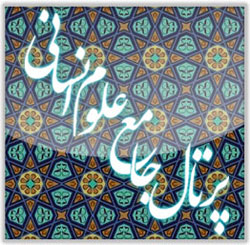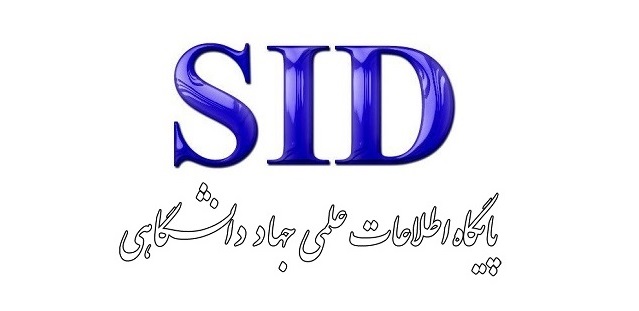طراحی مدل خطمشیگذاری جانشینپروری مدیران در حکمرانی تراز بیانیه گام دوم انقلاب اسلامی
کلمات کلیدی:
جانشینپروری مدیران, خطمشیگذاری, حکمرانی اسلامی, بیانیه گام دوم انقلاب اسلامی, دادهبنیادچکیده
هدف این پژوهش، طراحی مدلی جامع برای خطمشیگذاری جانشینپروری مدیران در حکمرانی تراز بیانیه گام دوم انقلاب اسلامی و ارائه الگویی بومی برای پرورش مدیران آیندهنگر و توانمند در ساختارهای مدیریتی کشور است. پژوهش حاضر از نظر ماهیت، کیفی و از نظر هدف، توسعهای است. رویکرد نظریه دادهبنیاد در قالب مدل گلیزر به کار گرفته شد. دادهها از طریق مصاحبههای نیمهساختاریافته با ۱۵ نفر از خبرگان، اساتید دانشگاه و مدیران ارشد کشوری گردآوری گردید. روش نمونهگیری هدفمند از نوع نظری بود و تحلیل دادهها در سه مرحله کدگذاری باز، محوری و انتخابی با استفاده از نرمافزار MAXQDA انجام گرفت. برای اطمینان از کیفیت پژوهش از شاخصهای مقبولیت نظریه دادهبنیاد استفاده شد. در این پژوهش، ۱۶۱ کد باز نهایی استخراج و در شش مقوله محوری طبقهبندی گردید: ضرورت سازههای خطمشیگذاری جانشینپروری، جانشینپروری مدیران، راهبردهای خطمشیگذاری، زمینه خطمشیگذاری، شرایط مداخلهگر و پیامدها. نتایج نشان داد که شاخصهای شخصیتی نظیر دینداری، تعهد، شجاعت و عدالتطلبی و شاخصهای مهارتی مانند تصمیمگیری، برنامهریزی و مدیریت بحران از عوامل کلیدی موفقیت جانشینپروری در سطوح حکمرانی هستند. مدل ارائهشده بیانگر آن است که جانشینپروری در سطح حکمرانی تراز بیانیه گام دوم، صرفاً فرآیند جایگزینی مدیران نیست بلکه نظامی چندبعدی برای تربیت، ارزیابی و سیاستگذاری مدیران شایسته است. این مدل با تأکید بر ارزشهای اخلاقی، شایستگیهای فردی و راهبردهای انطباق با بیانیه گام دوم، زمینهساز ارتقای کارآمدی نظام حکمرانی و تحقق تمدن نوین اسلامی خواهد بود.
دانلودها
مراجع
Clutterbuck, D. (2020). Effective Succession Planning: Critical Factors for Success. Routledge. https://clutterbuck-cmi.com/wp-content/uploads/Critical-Conversations-in-succession-Planning-1.pdf
Gay, M., & Sims, D. M. (2009). Building tomorrow's talent: A practitioner's guide to talent management and succession planning. AuthorHouse. https://www.amazon.com/Building-Tomorrows-Talent-Practitioners-Management/dp/1425994652
Golvardi, M., Zarei, H., & Jandqi, G. (2016). Identifying Factors Affecting Succession Behavior: A Qualitative Approach. Human Resource Management Research, 8(2), 183-208. https://hrmj.ihu.ac.ir/article_21334.html
Helton, K. A., & Jackson, R. D. (2007). Navigating Pennsylvania's dynamic workforce: Succession planning in a complex environment. Public Personnel Management, 36(4), 335-347. https://doi.org/10.1177/009102600703600404
Hunte-Cox, D. E. (2004). Organization Succession Planning and the Organizational Practices. Journal of Management Development, 239-260. https://miu.nahad.ir/m/article_477.html
Jan Ahmadi Gol, M., Rezaei Far, H., & Hakim Pour, H. (2023). Meta-Analysis of Factors Affecting Succession Management in Public Organizations. Research in Public Management, 16(60), 191-218. https://doi.org/10.22111/jmr.2022.40653.5662
Kheirgoo, M., & Shakouri, Z. (2021). Presenting a Model for Succession Planning in Public Organizations: An Exploratory Research Based on Grounded Theory Analysis. Sustainable Human Resource Management, 3(5), 135-152. https://sid.ir/paper/1035097/fa
Krauss, J. A. (2007). Succession planning and talent management recommendations to reduce workforce attrition and prepare for an aging population Wilmington University, Delaware, United States].
Mahat, R. (2025). Advancing women in government roles: Succession planning models. Government Leadership Journal, 29(1), 45-59.
Mahdi, M., Hosseini, S. H., Haji Pour, E., & Azami, A. (2023). Discovering and Identifying Mechanisms for Establishing a Succession System in Public Organizations. Research in Public Management, 16(59), 193-216. https://doi.org/10.22111/jmr.2021.36537.5294
Mehdi, M., Hoseini, H., Hajipor, E., & Ozma, A. (2023). Discovering and counting the mechanisms of establishing a succession planning system in governmental organizations. Public Management Researches, 16(59), 193-216. https://jmr.usb.ac.ir/article_6106.html
Mirmohammadi, S. M., & Hassanpour, A. (2011). The Administrative System of Iran: An Analysis of Problems and Challenges. Quarterly Journal of Public Management Outlook(8), 534-543. https://jpap.sbu.ac.ir/article_94515.html
Najafi Siyar, R., & Nikoonahad, A. (2020). Desirable Governance Characteristics of the Islamic Revolution Government in Accordance with the Second Step Statement of the Revolution. Scientific Quarterly Journal of Interdisciplinary Strategic Studies, 10(200), 173-141. https://smsnds.sndu.ac.ir/article_1360.html
Prix, S. D. A. S. (2024). Strategies Leaders of Small Businesses Use to Develop and Implement Succession Plans Walden University]. https://scholarworks.waldenu.edu/dissertations/15402/
Rothwell, W. J. (2010). Organization Development: A Systems Approach to Problem-Solving. HRD Press. https://books.google.com/books?hl=en&lr=&id=EkvX3j_6iGAC&oi=fnd&pg=PR11&dq=Rothwell,+W.+J.+(2010).+Organization+Development:+A+Systems+Approach+to+Problem-Solving,+HRD+Press.&ots=QtgOaT9Vpr&sig=RF4fppz9lCdtlmHCMKcpZ3zdfBg
Saadat Kia, S. (2023). The Duties of the Government in Promoting Ethics and Spirituality in Society Based on the Second Step Statement of the Islamic Revolution. Journal of Contemporary Islamic Studies, 1(5), 90-119. https://sid.ir/paper/1148170/fa
Sadeghi, F., Danshafard, K., Kheirandish, M., & Pilevari, N. (2024). Identification and ranking of succession management categories based on the second step statement of the Islamic Revolution: A case study of the national statistical system. Islam and Management Biannual, 11(20), 22-38. https://doi.org/10.1234/ismm.1403.11.20.22
Salimi, J., & Maknoon, R. (2018). A Qualitative Meta-Analysis of Scientific Research Related to Governance Issues in Iran. Public Management, 1(1), 1-10. https://doi.org/10.22059/jipa.2018.228757.1945
Șaptebani, N. I., Mocan, M., Coroian, A., Ardeleanu, C., Bratosin, C., Ardelean, M., & Boruga, D. (2024). Management and adaptation of human resources to the current needs of special status public officials. ANNALS OF THE ACADEMY OF ROMANIAN SCIENTISTS Series on ENGINEERING SCIENCES, 16(2), 83-97. https://doi.org/10.56082/annalsarscieng.2024.2.83
Seyedi, S. M., Jan Nisar, M., & Sharifipour, E. (2022). The Second Step Statement of the Islamic Revolution and the Scientific Roadmap of the Country. Journal of Culture and Health Promotion, 6(2), 228-237. https://ijhp.ir/browse.php?a_code=A-10-1-221&sid=1&slc_lang=fa
Shahabi, M. (2024). Presenting a Succession Management Model in Public Organizations Using Thematic Analysis. Journal of New Research Approaches in Management and Accounting, 8(30), 79-97. https://majournal.ir/index.php/ma/article/view/2784
Tammeaid, M., & Virtanen, P. (2020). The New Leadership Paradigm for the Public Sector. Research OUTREACH, 115. https://doi.org/10.32907/RO-115-4649
Vahdat, S., Afshari, S., Masoodi Asl, E., & Hesam, S. (2022). Key Factors Affecting Succession Planning in the Leadership of Public Hospitals in Iran: A Qualitative Study. International Journal of Healthcare Management, 17(1), 76-84. https://doi.org/10.1080/20479700.2022.2153963
Villalpando, D., Campbell, R. J., & Pérez-Nordtvedt, L. (2025). The Time to Succeed: CEO Appointment Phase Entrainment and Post-Succession Firm Operational Performance. SAGE Journals. https://doi.org/10.1177/01492063241311853
دانلود
چاپ شده
ارسال
بازنگری
پذیرش
شماره
نوع مقاله
مجوز
حق نشر 2025 مهدی علیخانی صدر (نویسنده); علی اصغر پورعزت; عباس منوریان (نویسنده)

این پروژه تحت مجوز بین المللی Creative Commons Attribution-NonCommercial 4.0 می باشد.









